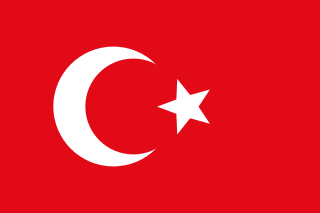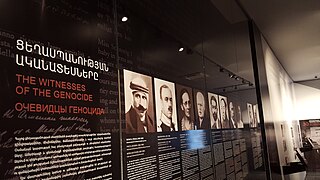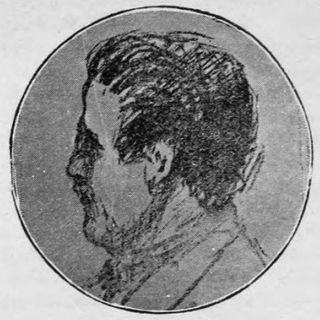Related Research Articles

The Armenian genocide was the systematic destruction of the Armenian people and identity in the Ottoman Empire during World War I. Spearheaded by the ruling Committee of Union and Progress (CUP), it was implemented primarily through the mass murder of around one million Armenians during death marches to the Syrian Desert and the forced Islamization of others, primarily women and children.

Deir ez-Zor is the largest city in eastern Syria and the seventh largest in the country. Located on the banks of the Euphrates River 450 km (280 mi) to the northeast of the capital Damascus, Deir ez-Zor is the capital of the Deir ez-Zor Governorate. In the 2018 census, it had a population of 271,800.

Aram Andonian was an Armenian journalist, historian and writer.

The deportation of Armenian intellectuals is conventionally held to mark the beginning of the Armenian genocide. Leaders of the Armenian community in the Ottoman capital of Constantinople, and later other locations, were arrested and moved to two holding centers near Angora. The order to do so was given by Minister of the Interior Talaat Pasha on 24 April 1915. On that night, the first wave of 235 to 270 Armenian intellectuals of Constantinople were arrested. With the adoption of the Tehcir Law on 29 May 1915, these detainees were later relocated within the Ottoman Empire; most of them were ultimately killed. More than 80, such as Vrtanes Papazian, Aram Andonian, and Komitas, survived.

Armenian genocide denial is the negationist claim that the Ottoman Empire and its ruling party, the Committee of Union and Progress (CUP), did not commit genocide against its Armenian citizens during World War I—a crime documented in a large body of evidence and affirmed by the vast majority of scholars. The perpetrators denied the genocide as they carried it out, claiming that Armenians in the Ottoman Empire were resettled for military reasons, not exterminated. In its aftermath, incriminating documents were systematically destroyed. Denial has been the policy of every government of the Ottoman Empire's successor state, the Republic of Turkey, as of 2024.
The Battle of Dilman took place during World War I fought at Dilman between the Russian Empire and the Ottoman Empire.
The Zeitun rebellion or Second Zeitun Resistance took place in the winter of 1895–1896, during the Hamidian massacres, when the Armenians of Zeitun, fearing the prospect of massacre, took up arms to defend themselves from Ottoman troops.

Ras al-Ayn, also spelled Ras al-Ain, is a city in al-Hasakah Governorate in northeastern Syria, on the Syria–Turkey border.

The Deir ez-Zor camps were concentration camps in the heart of the Syrian Desert in which many thousands of Armenian refugees were forced into death marches during the Armenian genocide. The United States vice-consul in Aleppo, Jesse B. Jackson, estimated that Armenian refugees, as far east as Deir ez-Zor and south of Damascus, numbered 150,000, all of whom were virtually destitute.

The Vilayet of Aleppo was a first-level administrative division (vilayet) of the Ottoman Empire, centered on the city of Aleppo.
Oscar S. Heizer was an American diplomat who served in various posts as Consul General in the Ottoman Empire. Heizer, who was the Consul General in Trebizond during World War I, witnessed the Armenian genocide and often risked his own life to save the lives of Armenians.

Jesse Benjamin Jackson was a United States consul and an important eyewitness to the Armenian genocide. He served as consul in Aleppo when the city was the junction of many important deportation routes. Jackson concluded that the policies towards the Armenians were "without doubt a carefully planned scheme to thoroughly extinguish the Armenian race." He considered the "wartime anti-Armenian measures" to be a "gigantic plundering scheme as well as a final blow to extinguish the race." By September 15, 1915, Jackson estimated that a million Armenians had been killed and deemed his own survival a "miracle". After the Armenian Genocide, Jackson led a relief effort and was credited with saving the lives of "thousands of Armenians."

Witnesses and testimony provide an important and valuable insight into the events which occurred both during and after the Armenian genocide. The Armenian genocide was prepared and carried out by the Ottoman government in 1915 as well as in the following years. As a result of the genocide, as many as 1.5 million Armenians who were living in their ancestral homeland were deported and murdered.

Sürgün or verb form sürmek was a practice within the Ottoman Empire that entailed the movement of a large group of people from one region to another, often a form of forced migration imposed by state policy or international authority. The practice was also a form of banishment or exile often applied to the elites of Ottoman society, the Pashas. It was most famously used as a method to forcefully displace the native ethnic Armenians by the Young Turk government in 1915, in order to deal with a perceived threat from Armenian partisan groups receiving military support from the Ottoman hostile Russian Empire. These events are listed as one of the methods used to complete the Armenian Genocide.

Armen Dorian was a renowned Armenian poet, teacher, and editor who lived in the Ottoman Empire. He studied at the Sorbonne University in Paris, France. He wrote poetry in French and Armenian. In 1915, Dorian was arrested and killed during the Armenian genocide at the age of 23.

The 1921 Amasya trials were special ad hoc trials, organized by the Turkish National Movement, with the purpose to kill en masse the Greek representatives of Pontus region under a legal pretext. They occurred in Amasya, modern Turkey, during the final stage of the Pontic Greek genocide. The total number of the executed individuals is estimated to be ca. 400-450, among them 155 prominent Pontic Greeks.
Bibliography of the Armenian genocide is a list of books about the Armenian genocide:

During World War I, Germany was a military ally of the Ottoman Empire, which perpetrated the Armenian genocide. Many Germans present in eastern and southern Anatolia witnessed the genocide, but censorship and self-censorship hampered these reports, while German newspapers reported Ottoman denials of the genocide. Approximately 800 officers and 25,000 soldiers of the Imperial German Army were sent to the Middle Eastern theatre of World War I to fight alongside the Ottoman Army, with German commanders serving in the Ottoman high command and general staff. It is known that individual German military advisors signed some of the orders that led to Ottoman deportations of Armenians, a major component of the genocide.

On 24 May 1915, on the initiative of Russia, the Triple Entente—Russia, France, and the United Kingdom—issued a declaration condemning the ongoing Armenian genocide carried out in the Ottoman Empire and threatening to hold the perpetrators accountable. This was the first use of the phrase "crimes against humanity" in international diplomacy, which later became a category of international criminal law after World War II.

Differing views of what caused the Armenian genocide include explanations focusing on nationalism, religion, and wartime radicalization and continue to be debated among scholars. In the twenty-first century, focus has shifted to multicausal explanations. Most historians agree that the genocide was not premeditated before World War I, but the role of contingency, ideology, and long-term structural factors in causing the genocide continues to be discussed.
References
- ↑ Sondhaus, Lawrence (2011). World War I: the global revolution. Cambridge University Press. p. 390. ISBN 978-052-173626-8. LCCN 2010051573. OL 24914957M.
- ↑ Jones, Adam (2006). Genocide: A Comprehensive Introduction. Routledge. p. 110. ISBN 0-4153-5384-X. OL 7492773M.
- ↑ Suny, Ronald Grigor (2015-03-22). "They Can Live in the Desert but Nowhere Else": A History of the Armenian Genocide. Princeton University Press. p. 314. ISBN 978-1-4008-6558-1.
- ↑ Gaunt 2006, p. 249.
- ↑ The Widening circle of genocide, Institute on the Holocaust and Genocide (Jerusalem), V. Dadrian, 1994, p. 103
- ↑ Charny, Israel W. (1999). Encyclopedia of Genocide (2 Volumes). ABC-Clio Inc. p. 95. ISBN 0-8743-6928-2. OL 8382807M.
- ↑ Hovannisian, Richard G. (2017). Looking Backward, Moving Forward: Confronting the Armenian Genocide. Taylor & Francis Group. p. 99. ISBN 978-135-150828-5. OL 38314201M.
- ↑ Hovannisian, Richard G. (1999). Remembrance and Denial: The Case of the Armenian Genocide. Wayne State University Press. p. 76. ISBN 0-8143-2777-X. OL 9859980M.
- ↑ Dadrian, Vahakn N. (1996). German responsibility in the Armenian genocide: a review of the historical evidence of German complicity. Blue Crane Books. p. 80. ISBN 1-8864-3401-8. OL 973501M.
- ↑ "ARMENIAN TELLS OF DEATH PILGRIMAGE; Writes to Sister in New York of Cruelties Suffered from the Turks. FAMILY IS TORN FROM HIM Children Taken Away and Wife Sold Into Slavery in Journey Across Desert. Families Torn Apart Women and Girls Sold. Lived by Eating Grass". The New York Times . 1919-07-27. Retrieved 2024-11-23.
- ↑ Gaunt 2006, p. 301.
- ↑ Morgenthau, Henry (2010). Ambassador Morgenthau's Story: Personal Account of the Armenian Genocide. Cosimo Classics. p. 219. ISBN 978-1-6164-0396-6.
- ↑ "Professor Fatma Müge Göçek's word during the 24 April 1915 commemoration, by Fatma Muge Gocek, Date: 22 April 2007, University of Michigan". Archived from the original on 1 June 2020. Retrieved 20 November 2011.
{{cite web}}: CS1 maint: unfit URL (link)